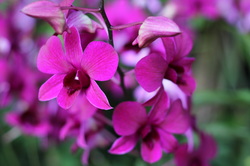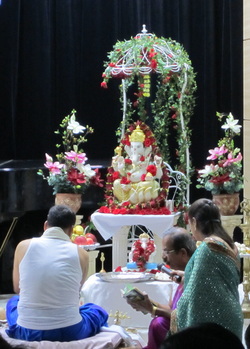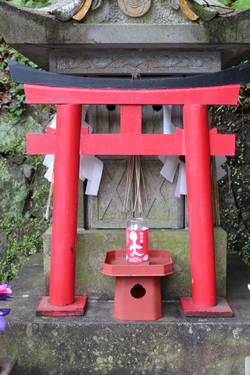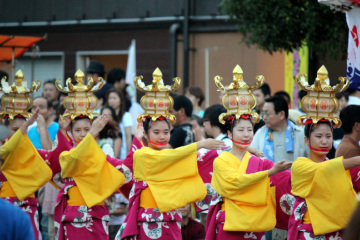
With the start of the new school year I began a new series of night classes for 15 high level 1st year high school students and 1 middle school student (his mother is my co-worker so she requested if he could join). We have classes twice a week for two hour intervals. During our first class I asked the boys to write a few different topics which they would like to study and most of them wrote other cultures. Luckily for all of us studying other cultures is a passion of mine (I do have a degree in cultural anthropology after all) and so I sat down to plan out the next 12 classes about world cultures.
The first few classes were basic get to know you classes - we did introductions, talked about music and since one class coincided with St. Paddy's day we studied a bit about Ireland and the holiday. After those first few classes I felt like I knew them a bit so I could plan other class activities appropriately. I spent free time during the next week and almost an entire weekend planning out a 50 page workbook including a variety of activities on other countries and cultures. We focused on 3 countries per continent so the boys would understand how diverse the world is - even on the same landmass. I also made sure that one country featured from each continent was English speaking in order to show the students that English is truly a global language. For each country we had a corresponding activity - the first country we studied had a comprehension portion, for the second country the boys got to try a traditional food and for the third country of the night there was a hands on activity.
Though there were plenty of bumps along the way overall I think "Mindy's Global Class" (so named by my students) turned out quite well and the boys enjoyed it. Below is an overview of our classes.
After spending a class discussing travel, travel desires and what one needs to travel we started our series of classes on the different continents. Our first class was on Europe since the date corresponded with Easter. I wanted the boys to have the opportunity to dye Easter eggs but wasn't sure how to fit that into a lesson on Europe. After some research I discovered that the American tradition of dying Easter eggs was started by German immigrants who brought the practice over with them in the 1800's. With this information I decided we would study Germany as one of the countries for that class. We also learned about how Easter is celebrated in Malta and enjoyed pimientos asados, a popular Spanish tapa. I took the above photo at the end of class - it seems to be Korean tradition for people not to smile in photographs which is why so many look sullen.
Our next class was on Oceania where the students learned about Sing Sing (dance festivals) in Papua New Guinea, got to try some fresh tropical fruit and ended the class with designing their own ta moko (Maori tattoos). While the mango went over incredibly well the boys didn't care for the fresh coconut at all - they described it as tasting like plastic (and I agree, it wasn't a particularly good coconut).
Asia was our third destination and so I coordinated a skype chat with the former Native English teacher of Hamchang who moved to Japan last August (pictured below). After the students grilled him on Japanese girls and food and being completely shocked that the average Japanese person does not care about Dokdo/Takeshima ( an island to which both countries lay claim) we transitioned into learning about India. The students had their first taste of Indian food (chana masala and rothi) before class was dismissed. Sadly we didn't have enough time to talk about Vietnam, our final Asian destination.
Stop number four on our world tour was South America. We learned about the bio-diversity of Guyana, food in Brazil (accompanied by an avocado milkshake) and the history of Peru with a treasure hunt/quiz. This was the first class when I actually witnessed my rambunctious students being deadly quiet - it seems that concentration type activities like crossword puzzles and maps keep the students entertained.
We moved onto Africa in our next class. My friend Kwame recorded a video about his country Ghana last semester for my class so I played it for the students. It seemed to be a hit - one boy sang along to his song and a few practiced how to say "hello" and "goodbye" in Kwame's native tongue. Afterwards we enjoyed some chakalaka, a popular dish from South Africa and we ended class with the boys writing their names out in Egyptian hieroglyphs.
Our last class before a 2 week moratorium on after school class due to mid term tests was a cooking class which I'll write about on a different day.
As you know from previous posts I recently went on a month long trek through south east Asia. Before I left on my trip I was a bit nervous about all the things going wrong on an extended trip such as that - especially since I was a female traveling alone. However, once I started my adventure and got into traveling mode all my worries melted away and I had a great time. There were definitely a few highlights to the trip and I'll write a post about them after I upload a few photos from each country I visited. It probably will take some time to get everything uploaded and posted but I'll try to do it sooner rather than later so I can also post a few entries about life in Korea.
Below are a few photos and experiences from my first stop - the city/state of Singapore.
Singapore

Singapore has the distinction of being the first English-speaking country I've ever visited outside of the USA. I'm fortunate to speak the language that is the current international language of business and travelers so traipsing around foreign countries is a bit easier for me than say, the Russian family I met in Laos with limited English. However, I guess I've just grown accustomed to some of the communication issues when traveling abroad because it took me awhile in Singapore to realize it was so easy to get around. Signs are in English (with Chinese, Malay and Tamil translations) as were menus and nearly everyone I encountered spoke English fluently. I think I'll definitely have to add a few more English speaking countries to my travel itinerary for the future because it was wonderful to be able to communicate easily and effectively.
I only spent a day and a half in Singapore because the country is incredibly small (it's a city-state) but very expensive in comparison to the rest of south east Asia. I focused most of my time there on two areas of interest - flowers and Indian culture. I spent most of Sunday exploring the beautiful Botanic Gardens and later on in the vibrant Little India neighborhood.
Singapore Botanic Gardens

Located in the city sits the 183 acre Botanic Gardens. The gardens offer refuge from the hustle and bustle of the city enticing visitors with its lush grassy lawns, quiet lakes and intriguing public art. For me the highlight of the gardens was the orchid garden - a small section of the larger gardens which boasts a variety of brightly colored orchids.
I spent a couple of hours in the garden Sunday morning and relished not only the beautiful flora but also seeing the locals enjoy and take advantage of all the garden has to offer - something that reminded me of Chicagoans and the lakefront.
Little India

Singapore is a diverse country with a population made up mostly of Chinese, Malay and Indians. One of the reasons I wanted to visit Singapore was because of it's large Indian population. My research was on diasporic Hindu traditions in the United States and I was curious to see how Hinduism was praticed in other countries. Unlike in the United States where the majority of Asian Indians are highly educated relatively recent immigrants who are employed in professional jobs the Indian community in Singapore dates back over a hundred years and inhabits a variety of socio-economic roles. Though I was there only for a day and a half I managed to visit 3 different temples and observed that Hinduism in Singapore was practiced much more closely to its Vedic roots than it is in the USA.
I spent part of Sunday in Little India - enjoying some really tasty food, peeking in to shops and visiting temples. The neighborhood was almost exclusively Indian and the smells and sounds were reminiscent of India which I traveled to last year.
Sri Mariamman Temple

Of the three temples I visited Singapore's oldest temple, the Sri Mariamman Temple, isn't located in Little India but instead on the periphery of Chinatown. I visited this temple multiple times during my short visit to Singapore because of it's close location to my hostel. I was able to observe the priests conducting a daily ritual in addition to people worshiping at the temple. The experience gave me a different perspective on diasporic Hinduism which is useful for my own research.
For a small fee you can take pictures throughout the temple which was elaborately decorated with statues of animals and gods. The temple is unlike something most people in the U.S. have seen so I wanted to share a few photos.

After a year in Korea I've finally found the information network for the local Indian community. It turns out that most Indians keep in touch via a facebook group. I requested to be added and now I am privy to the announcement for events such as Ganesh Chathurthi.
Ganesh, for those of you who don't know, is one of the most recognizable Hindu gods with his elephant head and body of a human. He's incredibly popular in Hinduism because he helps the devotee overcome obstacles so many Hindus pray to him before starting something new. Ganesh Chaturthi is an annual event that honors Lord Ganesh.
Since my research has been with diasporic Hindu traditions and with the conclusion of my current job and the start of my new one I decided it would be auspicious to attend the event. I left quite early Sunday morning for Seoul and arrived at the beginning of the ritual. It was interesting to observe the puja (religious ritual) after spending so much time within an established Hindu community in the US. The man conducting the puja didn't seem to be a priest by trade and paused here or there to adjust things during the ceremony.
After the puja was complete the rest of the morning and into early afternoon was filled with cultural events - mostly singing and dancing and the occasional discourse. The entire event was being hosted by the local Hare Krishna temple and this sponsorship was evident in the discourse given. One man called for people to share the Vedic culture with non-Hindus, a type of prostelyzation of which I had never heard before in a temple (or amongst Hindus). Another man spoke at length about how one might define religion and gave a very outdated perspective of how religion is understood within academia.
It was an interesting event - one that I'm happy to have attended to have a better understanding how some Hindus continue to carry on their traditions and rituals in a country such as Korea.

Shinto (神道), the way of the kami, is an indigenous religion in Japan. Followers worship kami, a word which can be translated as a god, spirit or essence. Some kami such as Amaterasu from whom the Japanese imperial line are descended are in human form. However, other kami are more animistic in nature and can be found in rivers, mountains and even rocks.
The actual number of Shinto practitioners is difficult to count since it is not necessary to be a recognized adherent to worship at a Shinto Shrine. Many Japanese will visit a shrine throughout the year with the largest attendance being on New Year's day. However, an important examination, an upcoming job interview or the desire for an amulet are other reasons which might draw a visitor into a shrine.
Since I am interested in culture and religion, specifically localized religious practices I decided to visit as many Shinto shrines as possible during my most recent travels to Japan. I managed to visit at least 25 shrines in just 9 days and partake in the most basic of Shinto rituals - praying to the kami.
Click "Read More" below to view a few of my favorite shrines from this trip.

Amidst the scorching August sun and thick humidity common to Kumamoto Prefecture, the town of Yamaga in southern Japan, hosts its annual lantern festival. Thousands of people descend upon this small hot springs town to watch local women dressed in matching yukata, cotton kimono, while wearing delicate hand-made golden lanterns atop their heads.
The festival consists of two days of events, mostly centered around Omiya Shrine and Yamaga's famous lanterns. On the first day only a select few women dance down the main street for the gathered crowds. They repeat their performance and pause to take pictures. Afterwards attendees are entertained with taiko performances, children's games and popular festival food because the event is concluded with a flashy fireworks show over the Kikuchi River. On the second day after various events 1,000 women dance while wearing matching yukata and lanterns. They move gracefully to the slow music of the accompanying shamisan before men dressed in traditional clothing bring forth palanquins which have been blessed by the shrine.
Yamaga's Lantern Festival re-enacts a local story about a visit from emperor Keikou and his entourage. The thick fog from the Kikuchi River impeded their travels and the local people of Yamaga ventured out with lighted torches to lead them back to the village. The people of Yamaga recreate this story as part of concluding events of the lantern festival.
Though the festival has strong ties with Omiya Shrine, a local Shinto Shrine the event corresponds with o-bon, an annual festival during which Japanese return to the ancestral homes, clean the family graves and welcome back their ancestors. O-bon celebrations throughout Japan feature women dressed in yukata dancing the o-bon odori along the streets. The festival incorporates this dance as well which highlights the syncretized nature of Buddhism and Shinto in Japan. Few Japanese are one religion or the other but integrate practices and rituals from both into their lives.
Below are pictures from the two days of the festival.

It's a testament to how much I enjoyed my research and how welcomed I felt by the Hindu community that, though I initially planned on only visiting the temple for a few hours during my final visit to Munice, I actually ended up spending the entire weekend there.
Though I felt prepared by years of classes in anthropology when I entered the community to do research I realize now that what they don't prepare you for is when you leave. It's difficult to say good bye to people who overwhelmed me with kindness during my time there and all I can say is a heartfelt thank you.